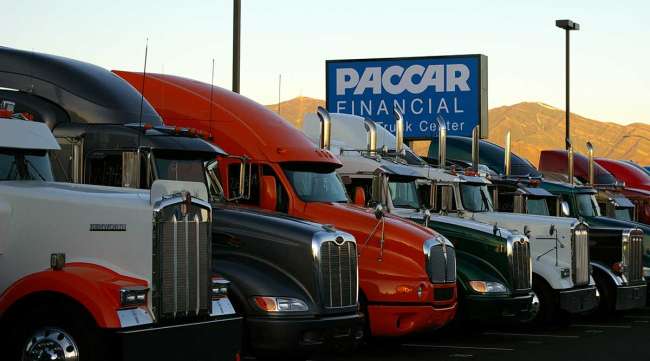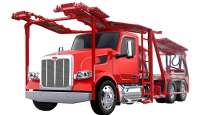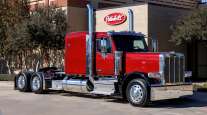Paccar’s Net Income Down in Second Quarter Despite Revenue Surge

Second-quarter net income declined for truck maker Paccar Inc., even though revenue increased for the Bellevue, Wash.-based parent of Kenworth Trucks and Peterbilt Motors.
The 2016 second quarter contained a non-recurring credit, so quarterly profits declined to $373 million, or $1.06 a share, from $481.3 million, or $1.37, in the year ago period. Over the same time, quarterly revenue improved to $4.4 billion from $4.12 billion.
As part of the company’s July 25 earnings report, Paccar released an adjusted net income figure for the 2016 second quarter of $371.7 million, or $1.06, just under the level of the quarter ended June 30.
Bloomberg News said the Wall Street consensus for the recent quarter was 99 cents a share.
“Paccar’s financial results reflect increasing North American truck production and market share, strong European truck markets and higher global aftermarket parts sales,” CEO Ron Armstrong said in the earnings report.
Paccar’s biggest market is the United States and Canada, where second-quarter revenue increased to $2.92 billion from $2.68 billion and deliveries of Kenworths and Peterbilts improved to 21,200 from 19,800 in the corresponding quarter of 2016.
European revenue decreased by less than 1%, while truck deliveries increased by 5.3%, year-over-year.
The company’s three global divisions — trucks, parts and financial services — all posted revenue gains for the quarter. The parts segment also increased operating income, whereas trucks and financial services were profitable at lower levels.
Analyst Jamie Cook told clients of Credit Suisse that it is “worth noting that [Paccar’s] sales inflected positive for the first time after seven quarters of declines.”
The adjusted upward its industrywide projections for truck production, for both the North America and Europe.
Class 8 retail sales are expected to be 200,000 to 220,000 for the United States and Canada this year, industrywide. The previous lower boundary was 190,000 and the top limit is unchanged.
In Europe, the new heavy-duty projection is 290,000 to 310,000 vehicles. The previous range was 270,000 to 300,000 trucks.
The earnings statement also said Paccar will open later this year its Silicon Valley Innovation Center.
The facility “will coordinate next-generation product development and identify emerging technologies that will benefit future vehicle performance,” the report said. Technology areas of focus will include advanced driver assistance systems, artificial intelligence and vehicle connectivity.
A year ago, Paccar had to reach a settlement with the European Union related to an investigation of several European truck makers, including Paccar’s DAF Trucks unit, on antitrust issues. Paccar paid a fine of $833 million during the first three months of 2016, but received a refund adjustment of $109.6 million during the second quarter, making the net payment worth $723.4 million.




